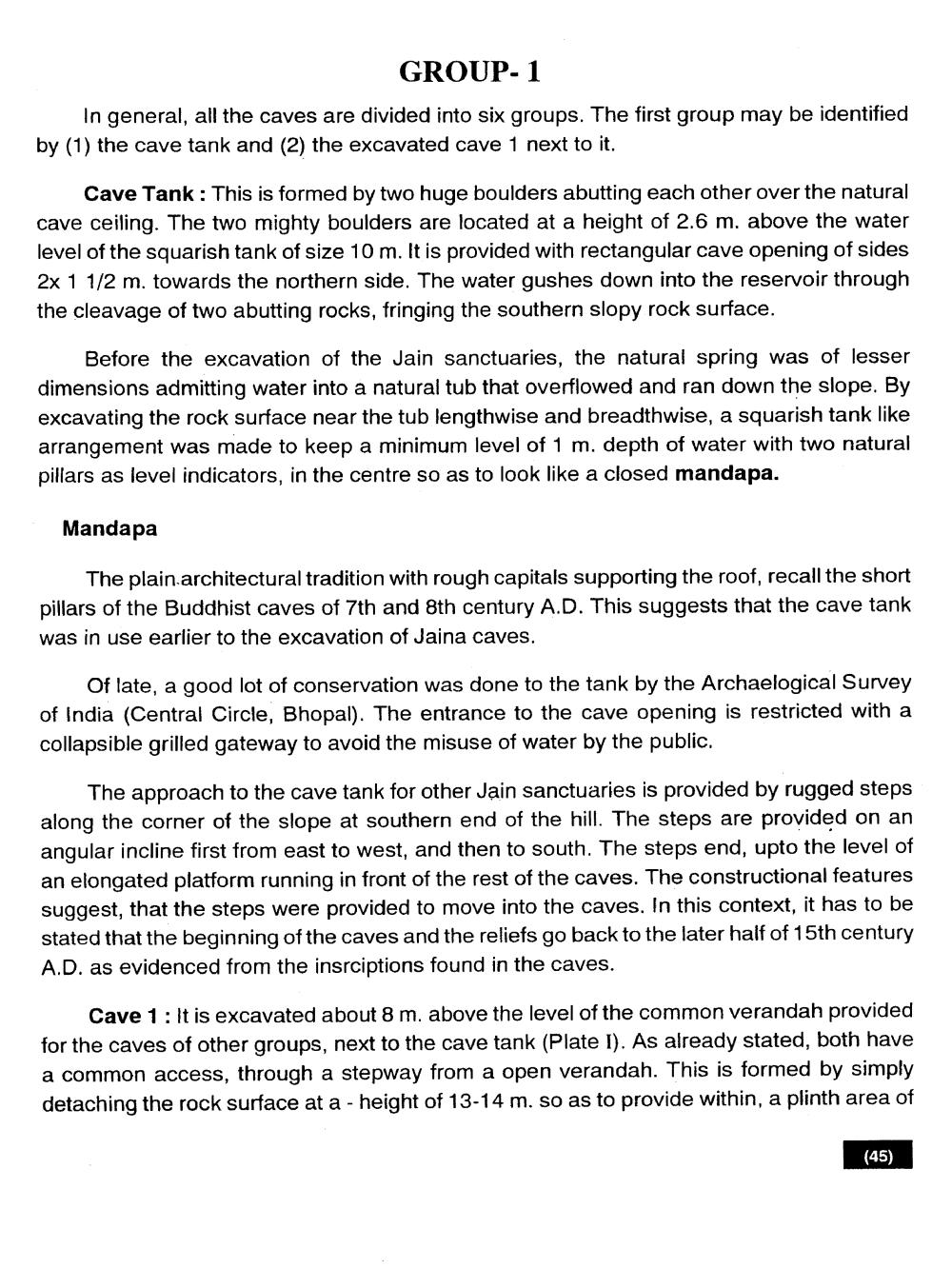________________
GROUP-1
In general, all the caves are divided into six groups. The first group may be identified by (1) the cave tank and (2) the excavated cave 1 next to it.
Cave Tank : This is formed by two huge boulders abutting each other over the natural cave ceiling. The two mighty boulders are located at a height of 2.6 m. above the water level of the squarish tank of size 10 m. It is provided with rectangular cave opening of sides 2x 1 1/2 m. towards the northern side. The water gushes down into the reservoir through the cleavage of two abutting rocks, fringing the southern slopy rock surface.
Before the excavation of the Jain sanctuaries, the natural spring was of lesser dimensions admitting water into a natural tub that overflowed and ran down the slope. By excavating the rock surface near the tub lengthwise and breadthwise, a squarish tank like arrangement was made to keep a minimum level of 1 m. depth of water with two natural pillars as level indicators, in the centre so as to look like a closed mandapa.
Mandapa
The plain architectural tradition with rough capitals supporting the roof, recall the short pillars of the Buddhist caves of 7th and 8th century A.D. This suggests that the cave tank was in use earlier to the excavation of Jaina caves.
Of late, a good lot of conservation was done to the tank by the Archaelogical Survey of India (Central Circle, Bhopal). The entrance to the cave opening is restricted with a collapsible grilled gateway to avoid the misuse of water by the public.
The approach to the cave tank for other Jain sanctuaries is provided by rugged steps along the corner of the slope at southern end of the hill. The steps are provided on an angular incline first from east to west, and then to south. The steps end, upto the level of an elongated platform running in front of the rest of the caves. The constructional features suggest, that the steps were provided to move into the caves. In this context, it has to be stated that the beginning of the caves and the reliefs go back to the later half of 15th century A.D. as evidenced from the insrciptions found in the caves.
Cave 1: It is excavated about 8 m. above the level of the common verandah provided for the caves of other groups, next to the cave tank (Plate I). As already stated, both have a common access, through a stepway from a open verandah. This is formed by simply detaching the rock surface at a - height of 13-14 m. so as to provide within, a plinth area of
(45)




